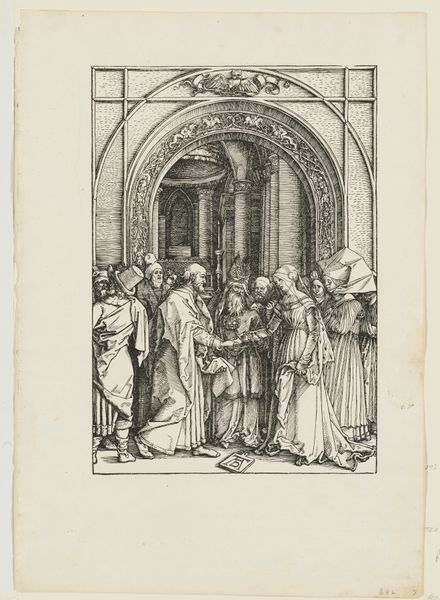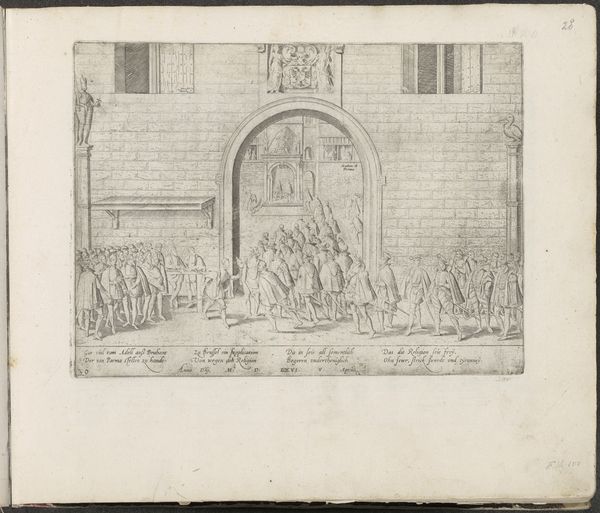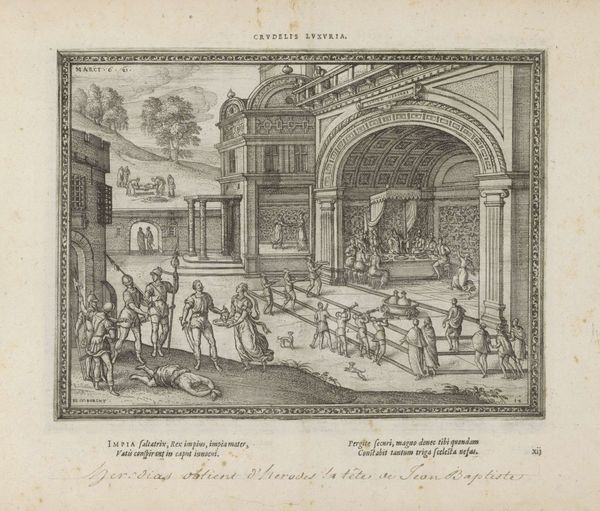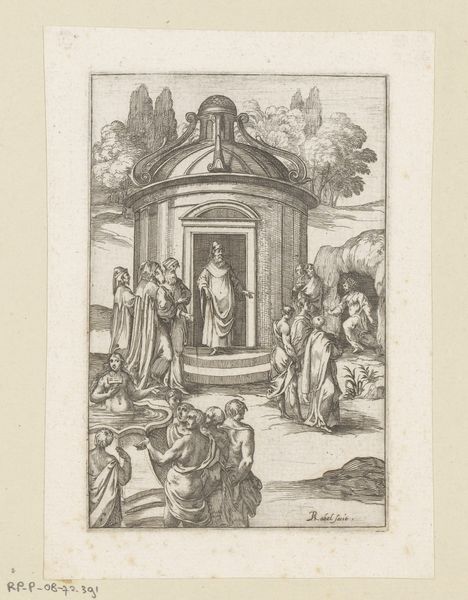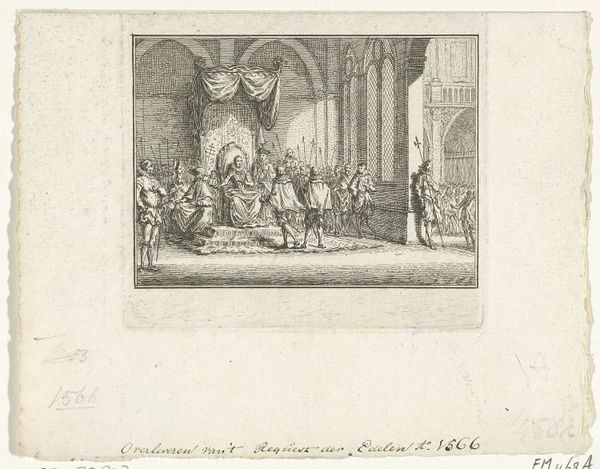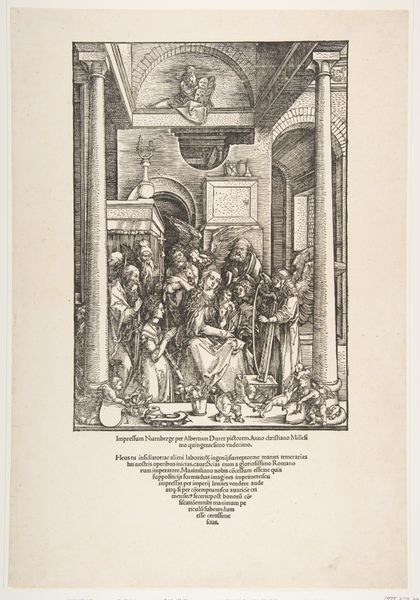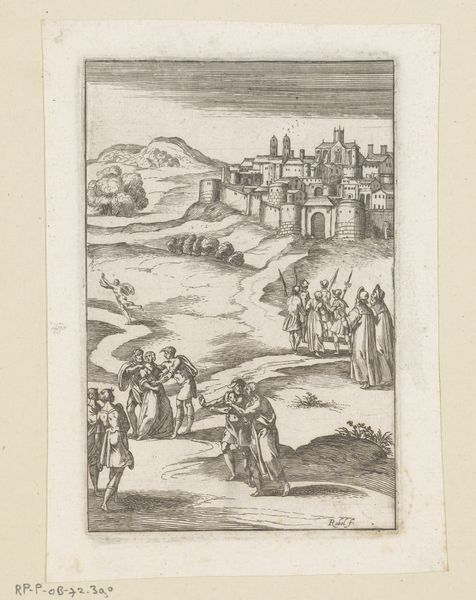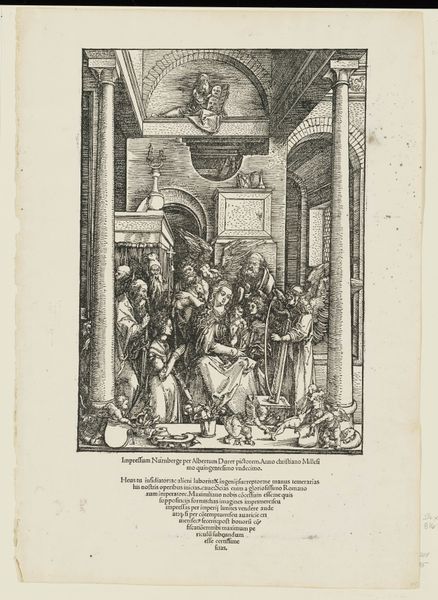
print, engraving
#
baroque
# print
#
old engraving style
#
figuration
#
history-painting
#
engraving
Dimensions: height 330 mm, width 194 mm
Copyright: Rijks Museum: Open Domain
Editor: This is "Kroning van koning Karel V en zijn vrouw," or "Coronation of King Charles V and his wife," an engraving from around 1729 to 1733. It’s incredibly detailed for a print. How would you interpret this depiction of power? Curator: The image presents a very specific narrative of power, legitimizing Charles V's reign through a highly ritualized religious coronation. It's staged within a grand architectural setting. How do you see the relationship between religious authority and royal power represented here, especially considering the socio-political context of the time? Editor: Well, the Archbishop seems central to the coronation itself, positioning the church as a key partner in legitimizing the monarchy. There’s this performative aspect, and maybe also a message of divine right. Curator: Precisely. Now, let's consider how this imagery functions within a larger system of representation. Think about the history-painting genre itself. Who is being represented in the center, and who are the marginalized onlookers? Whose stories are valued in historical accounts, and whose are often erased? The architecture, for instance, can also be viewed as more than just decoration, embodying and reinforcing class structures of that era. What voices are notably absent here? Editor: I hadn't thought about absence, but it's clear that the voices of the common people aren't represented. This focuses solely on the elite, on the perpetuation of aristocratic rule and male-centric religious rule. Curator: Exactly! And examining such depictions critically allows us to challenge established narratives, explore hidden histories, and reflect on the lasting impact of such power dynamics on our own societies. This understanding fosters inclusive storytelling of those silenced. Editor: I never considered viewing the art through this social scope; it offers a new dimension. Curator: Agreed. Considering diverse narratives lets us examine historical works through a vital, transformative lens.
Comments
No comments
Be the first to comment and join the conversation on the ultimate creative platform.


